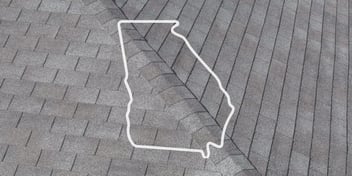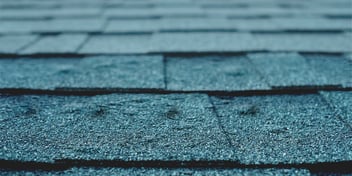- Home »
- Learningcenter »
- New shingles old ones
FAQ: Can You Put New Roof Shingles on Top of Old Ones?
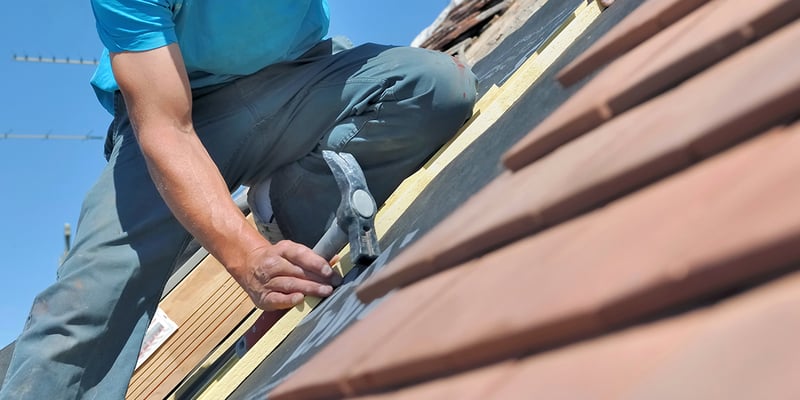
Your home’s biggest enemy is water; one of the most important jobs your roof serves is to help keep water out. We all understand just how important it is to maintain and upkeep our roofs, but at the same time, this can be one of the more expensive aspects of homeownership.
For this reason, it’s perfectly natural to try and come up with ways to save money when you are performing necessary roof maintenance and repairs. If you have an asphalt shingle roof near the end of its life, for instance, you might wonder whether you can save money by simply attaching new shingles on top of the old ones.
The answer to this question is technically ‘yes.’ Before you start making plans to layer new shingles over old shingles, though, there are a number of reasons why most roofing experts do not recommend this strategy.
In this article, let’s take a closer look at some of the considerations you’ll want to factor in when choosing whether to remove your old shingles before installing new shingles so you can make an informed decision about your home’s roofing system.
Can You Put New Roof Shingles Over Old Ones?
If you are considering putting new asphalt shingles over your old shingles, you’re likely wondering whether this is a good long-term solution.
While you technically can put new shingles over old shingles, there are a number of reasons why this probably isn’t the preferable option, which we’ll go into in the next section. First, we’ll look at some of the justifications for laying new shingles on top of old shingles.

There are two reasons why most people consider putting new shingles on top of old ones– to save money and to reduce the hassle.
When you don’t have to rip off the old shingles before putting on a new layer, it saves the labor cost if you are hiring someone to do the work and saves your time if you’re taking on the project yourself.
In terms of the time cost of taking off the old roofing materials, it generally takes roughly 30% of the time on the job site without factoring in the time of cleaning up the site. When you don’t tear off your old roofing, a roofing crew is able to move in and start installing your new shingles immediately.
Another benefit of not taking off your shingles is that it doesn’t leave your roof exposed to the elements during the process. That being said, time and cost savings are usually the two most compelling factors that lead homeowners to skip removing old shingles.
Why You Shouldn’t Put New Roof Shingles on Top of Old Ones
When a roofing company comes out and offers an estimate for your roofing project, they will most likely recommend that you tear off your existing shingles and start over fresh. In some cases, you might find that some contractors will not perform a job if you are committed to leaving the old shingles on.
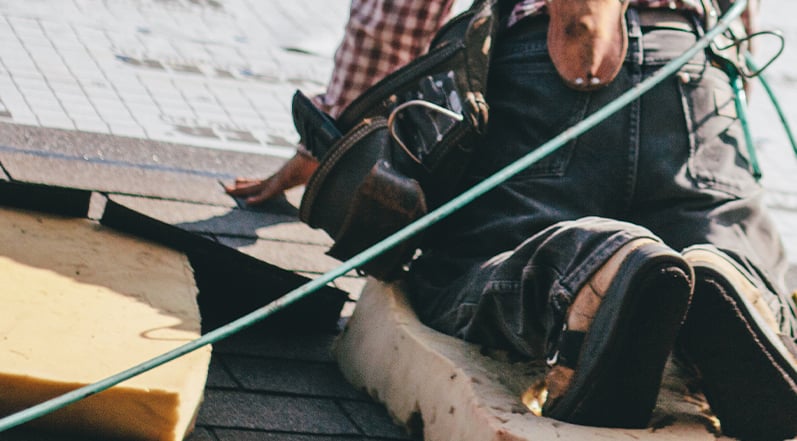
You might think these sales reps are just trying to get the most money from the job. The truth is, though, there are a number of reasons why it really is a better long-term solution to remove your old shingles before installing new ones.
1. Reduces the Ability to Properly Inspect Your Roof
Roofing professionals won’t be able to inspect your roof deck and underlayment if they don’t take off the existing layer of shingles. Roof decking and underlayment are materials that add extra protection to the interior of your home underneath your shingles.
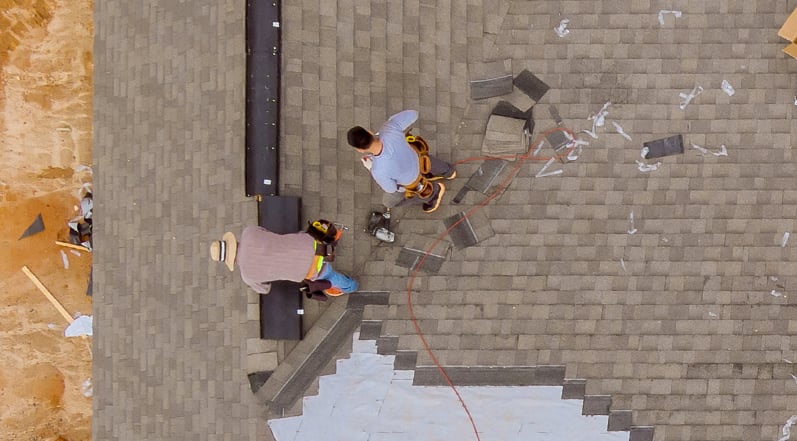
If there are spongy, soft, or rotting spots on your roof decking, roofing contractors can only find out if they take off the shingles first. If your underlayment is deteriorated in a way that reduces its ability to provide moisture protection, refraining from removing your old shingles will leave you and your roofers unaware of this reality.
Are you shopping for new shingles, and you’re not sure what the difference is between 20, 30, 40, and 50-year shingles? If so, make sure you check out our recent post that helps explain the similarities and differences between these asphalt shingles.
2. Creates Uneven Surfaces
Shingles are designed with the expectation that they will be nailed into the smooth, flat surface of the underlayment. When you’re installing new shingles over old ones, there is an additional layer of material between the new shingle and the underlayment. This can mean that the nail doesn’t have nearly as strong a hold as it would without the old shingles, potentially making it more likely that your shingles will blow off your roof.

Beyond that, your old shingles will create a bumpy, uneven surface upon which you are expecting to install new shingles. This means that the new shingles won’t lay perfectly flat on your roof, potentially compromising the amount of protection that your new roofing material provides for your home.
3. Potentially More Expensive in the Long Run
We get it– roofing projects can be expensive. It’s natural to want to cut costs when it’s time to install a new roof, and the fact that you technically can layer new shingles over old shingles might tempt you to go that route.
The reality is that you’re ultimately just kicking the can down the road. If you expect to be in your home for decades to come, it’s possible that you will still be living in your home when it’s time for new roofing to be installed. When that day comes, it means that the roofing company you contract will have to remove two layers of shingles rather than just one and dispose of two layers of shingles rather than just one.

Even if you don’t expect to stay in the home forever, layering shingles can still cost you money. As we’ll touch upon a little later on, it can have a negative impact on your home resale value and scare away otherwise interested buyers.
4. Issues With Old Shingles Can Reduce the Lifespan of New Shingles
If the shingles that are currently on your home have any moss or algae growing on them, they can negatively impact the longevity of your new shingles.

No longer exposed to the sun and elements, these growths will get trapped between the two shingles and potentially lead your new shingles to degrade more quickly than they would if you removed the initial layer.
Are you trying to decide between the different types of shingles available on the market? Take a look at our complete guide to laminated shingles and their benefits to help you decide whether architectural shingles are the right choice for your home.
5. Layering Shingles Is Just a Band-Aid, Not a Cure
If you’re layering new shingles on top of old shingles because a leak or other issue has emerged, you’re really just applying a bandage instead of dealing with the problem at its source. If there has been water intrusion into your roofing system, it’s possible that your decking and underlayment have been compromised.

Since you can’t adequately inspect (let alone replace) these elements of the system without removing the old shingles, laying new shingles on top of old ones might temporarily reduce the issue but won’t solve your roofing problems at the root.
6. Creates Weight Strain
Shingles might not seem particularly substantial when you’re looking at them one at a time, but they add a lot of weight to your roof in aggregate. In fact, one square of roofing material typically weighs between 250 and 400 pounds, with a square equalling one hundred square feet of roofing.
When you add another layer of shingles on top of the existing shingles, you are doubling the amount of weight that your structure is holding up. This adds stress to your roof structure that your house might not have been built to withstand, which can otherwise worsen damaged sheathing.
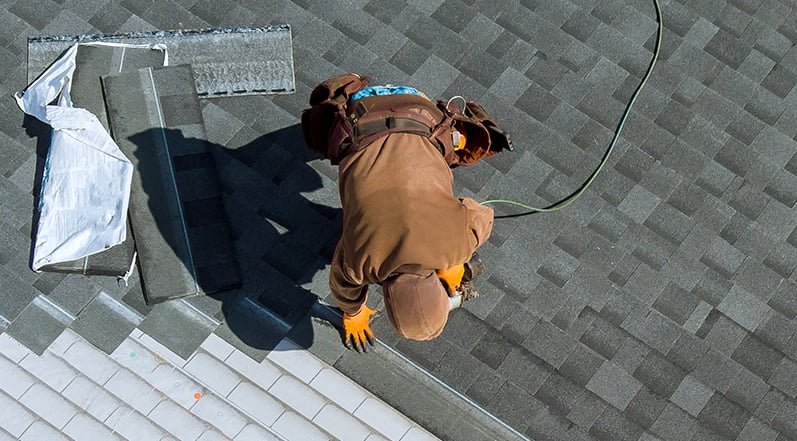
Depending on how your home was constructed and whether it was built to withstand additional weight beyond the first layer of shingles, it’s possible that you could add enough weight for your roof to actually start sagging. This is not a structural problem that you want to have to deal with, so if you do decide to add another layer of shingles, you’ll want to make sure that the structure will be able to withstand the added weight.
7. Potentially Conflicts With Building Codes
If you have your heart set on installing new shingles over an existing layer of shingles, you’ll want to make sure you check in to the building codes and regulations in your area.

Some places will have specific guidelines about how many roof layers you are allowed to have on a structure. Depending on your location, you might find that a second layer of shingles is allowed or that only one layer of shingles is permitted.
Does your home in the Peach State need a new roof? Make sure you take a look at our post about the best shingles for the residents of Georgia.
8. Resale Value
Even if you aren’t considering selling your house anytime soon, it’s worth thinking about what doubling up on shingles can do to the potential resale value of your home. On the one hand, prospective buyers might be worried about the expense that this could cause them down the road, as it means that they will have to pay to have two layers of shingles removed if they need to replace the roof.
Beyond that, it might imply to buyers that the roofing job was done by a homeowner rather than a professional crew, making them feel nervous about the installation having been done improperly.

Ultimately, layering new shingles over old shingles can potentially scare away buyers if you were ever to sell your home. Therefore, if you expect that you might be moving at some point in the future, this is something you’ll want to seriously factor into your decision.
The realization that it’s time to replace your roof can feel pretty overwhelming, particularly if this is your first time owning a home with a roof that is nearing the end of its life. To help you navigate the process, we’ve published a complete guide to Atlanta roofing replacement which you can download for free.
9. Warranty Issues
Another important issue you’ll want to consider before installing new roof shingles over old ones is the fact that it could void the manufacturer’s warranty.

Many shingle manufacturers will state that the warranty is invalid if you layer shingles on top of existing shingles rather than installing them onto the underlayment.
What About Other Types of Shingles?
Asphalt shingles are the most common roofing material on residential homes in the United States, but they aren’t the only type of shingles you can use as a part of your roofing system. Shingles can also be made out of materials like clay, metal, and slate.
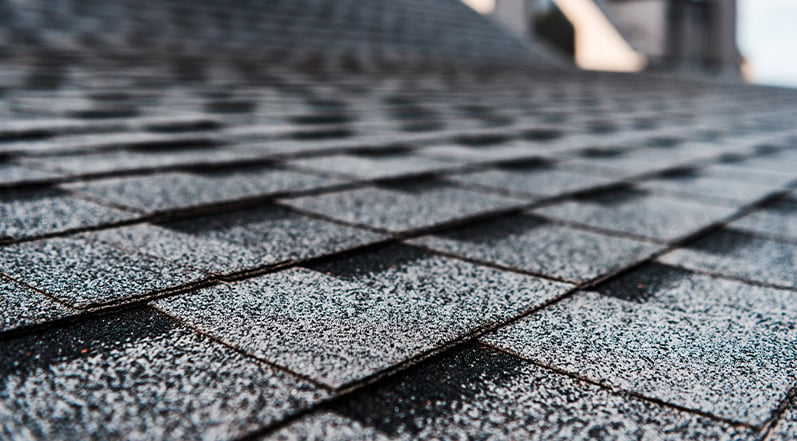
With heavy materials like clay and slate, you certainly don’t want to put a second layer over the existing layer. In general, adding a second layer to any steeply sloped roof products is not advised because it can create hazardous roof conditions. While asphalt shingles are allowed in some places to have two layers, there are usually regulations against having more than two layers of asphalt shingles.
Is Your Asphalt Shingle Roof Near the End of Its Life?
At Colony Roofers, we pride ourselves in offering the absolute best prices in the Atlanta area for the highest quality roofing systems. We know that it isn’t anyone’s idea of a good time to have roof repair work or replacements done, which is why we always strive to make your experience hassle-free and simple.
Our team has been hand-selected for their experience, integrity, and work ethic, and our customer service team always goes above and beyond to ensure that you have a stress-free and enjoyable experience working with us.
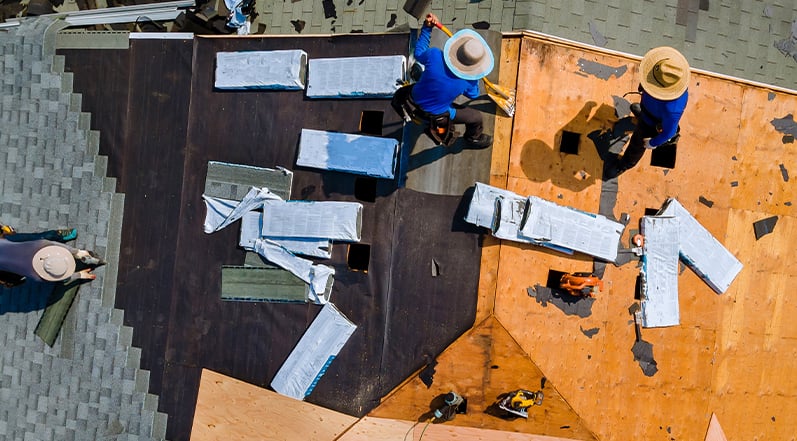
If it’s time for you to replace or repair your asphalt roof in the Atlanta area, you’ve come to the right place. If you have any questions about our services or the process of replacing your roof, or you’re interested in having us come out to give you a free estimate, please feel free to contact us today.
 Call (678) 365-3138
Call (678) 365-3138

